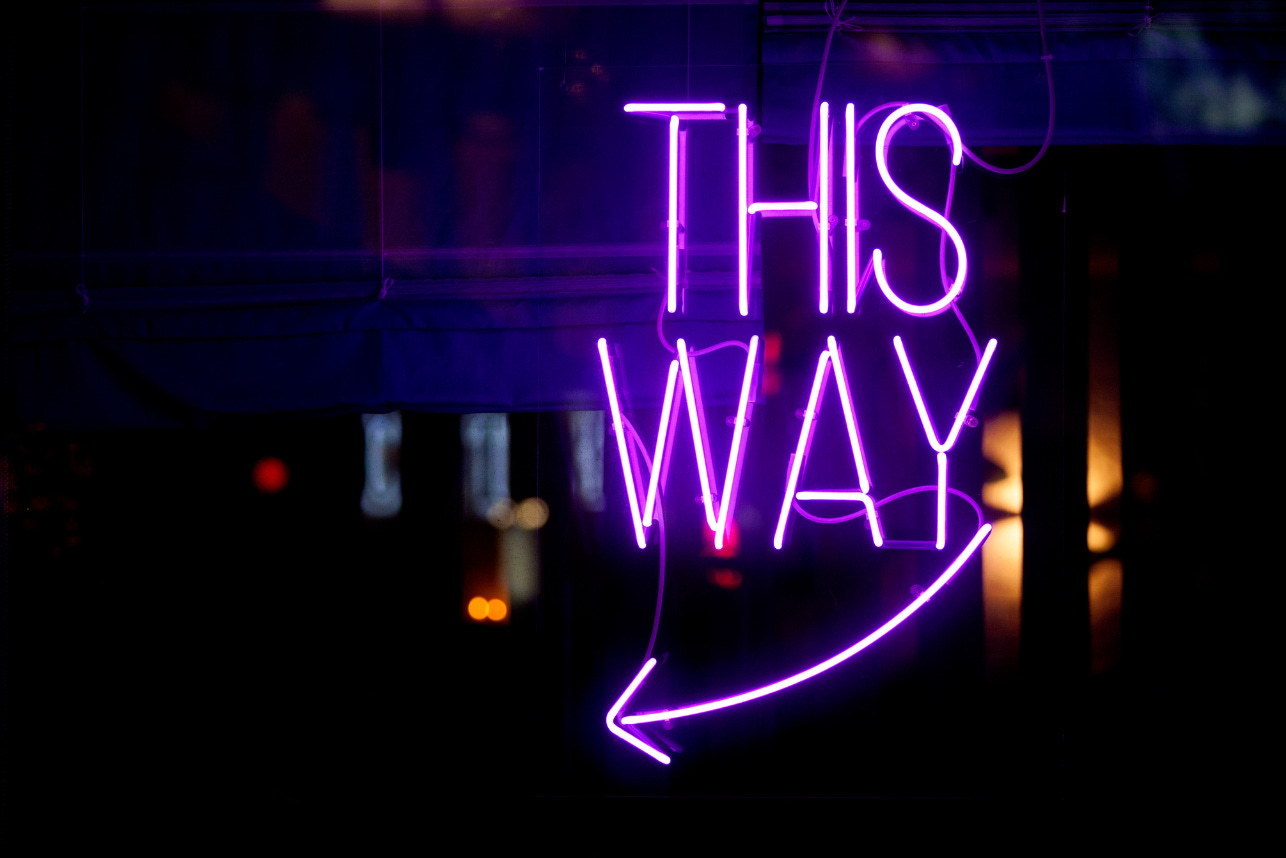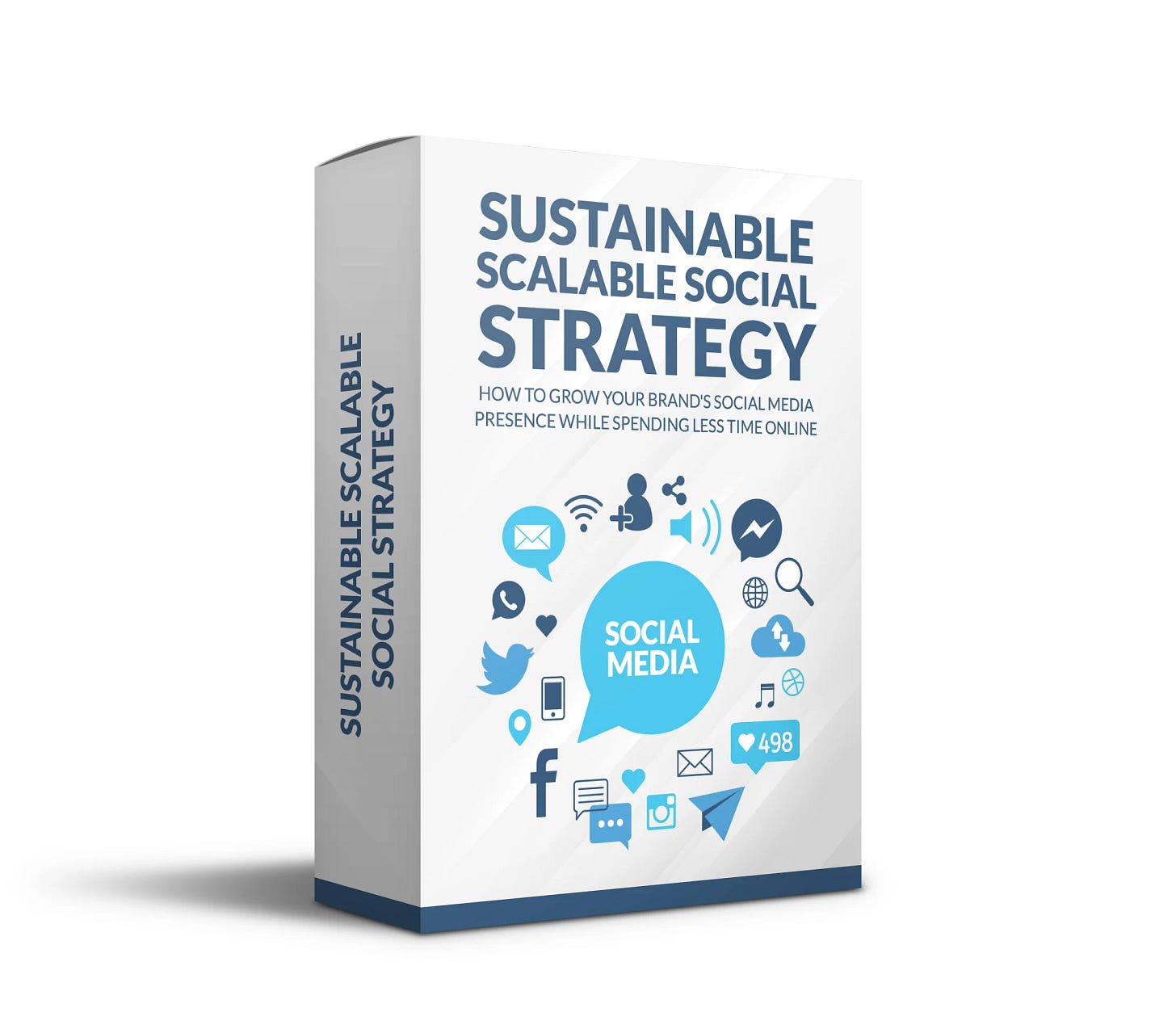➡️ Stop overthinking and finally publish that article — join The 5-Day Article Sprint that gets you from idea to inbox in under a week. Get it here.
A few years ago, I convinced my Dad to set up a website for his business.
He runs a store in my hometown selling supplies for fishing trawlers. He’s a good businessman with common sense running through his veins. But he’d never had a proper website for his company.
So I helped set it up. Bought the domain, put together a simple Wordpress site, even got a graphic design friend to update his old logo.
It looked good. I was excited to flesh it out more.
And then Dad hit me with this little bombshell: “I don’t have time to put anything on the website. I just want contact details on there so people can find me.”
Gulp!
Ad | Sustainable Scalable Social Strategy
This 6-part, online, self-driven course will guide you through the same process I used to develop a strategy for my social media management.
You’ll think about Content, Scheduling, Engagement and the methods used to Review your approach when you’re done.
When you finish, you’ll have a sustainable social strategy in place that will help you scale your business properly.
Become a How to Write for a Living sponsor.
I pushed Dad to write some text for SEO purposes. Just a few paragraphs. Anything at all that’d help potential customers find the site.
But he never did. And in his defence, I stopped reminding him about it after a while.
Dad just wanted to make it easier for people to contact him. He assumed, as many do, that having a small piece of digital real estate on the interwebs would be enough. People would find that, right?
Maybe, if they happened to search for the exact name of his company. But beyond that, no. That website would never be found. It was undiscoverable.
I think we as writers can fall into the trap of believing readers will find us just because our writing exists online. I’ve heard horror stories about newly-published authors who did zero promotion because they assumed their readers would simply stumble across their book, just because it had an Amazon listing. You can guess how those stories ended.
Unless we’re deliberately writing SEO-rich content with the express purpose of gaining visibility on search engines (and even at that, SEO’s not nearly as effective as it once was), our writing will quickly get lost in the weeds. Over 7.5 million blog posts are published every day - that’s what we’re up against.
And that’s why discovery content is so important. We have to make it as easy as possible for potential readers to find our work, especially if that work isn’t discovery content itself.
It starts with a single core creation and branches out from there. On my end, I’ve settled on two main types of core content (beyond my writing itself): YouTube and podcasting.
Both are great long-term, evergreen forms of core content, the polar opposite of most social media these days. My YouTube audience is tiny but growing gradually, and I get good traction with my podcast episodes. I hope to eventually have at least 100 episodes of the podcast and three times as many YouTube videos online in the next couple of years, as long as both of them remain fun to make.
Consider supporting How to Write for a Living!
Upgrade to our paid tier to unlock every article in our archive, participate in group video cohorts, and gain full access to our value-packed Member Resource Hub. Become a VIP Member for a little bit extra and book a 1-to-1 coffee chat with yours truly.
Of course, the problem with core content is that it’s often time-consuming to make.
For instance, one of my podcast episodes takes around 45-60 minutes to record, a similar length of time to edit (because I have to listen back through it), and probably at least another 30 minutes to prepare (post, thumbnails, etc). And that doesn’t include upload times. It’s a hefty chunk of my day.
But that single piece of time-consuming core content becomes the basis for a wide range of discovery content that takes far less time to put together and distribute online.
Discovery content (especially when it’s evergreen) is so good because once it’s out there, it does all the hard work for you. People search for the topics you’ve covered, find your creations, and are led gently to your core content, which in turn leads them into your community.
And that entire system carries on working while you’re doing more important things, like sleeping.
Simply take your core content (eg. a single video) and divide it up into multiple, bitesize pieces. Scatter a few of those pieces across the internet as discoverable teasers for your full core content, and watch as they draw new audience members into your online community.
Discovery > Core > Community
I’ve broken this entire process down in full in my latest Mini Masterclass, which paid members can watch and comment on here. We’ll also dive deeper into this during our next live group session in September.
Don’t sit back and wait for your audience to find your work. It deserves to be read, or watched, or heard.
Start exploring your own discovery system this week.
What others are saying about How to Write for a Living:
📣 Want to support this publication + get more eyes on your brand? Become a How to Write for a Living sponsor. Get more info here.






![Table of Contents [Start Here]](https://substackcdn.com/image/fetch/$s_!HZw1!,w_140,h_140,c_fill,f_auto,q_auto:good,fl_progressive:steep,g_auto/https%3A%2F%2Fsubstack-post-media.s3.amazonaws.com%2Fpublic%2Fimages%2Ff55bc14d-bcf7-4bc8-b217-8677a657fbda_1286x858.png)

It hasn’t been the content creation as much as the predatory platforms that have destroyed my creation capacity. Substack is the first place that hasn’t felt soul sucking since Google+… yes, I said Google+ 🤣 I’m a newbie, nobody here and there’s some really glorious freedom in that. I think a fresh start is in order. Lovin’ your stack, brotha. 🥃
Thanks for sharing , Love this 🥰🥰🥰